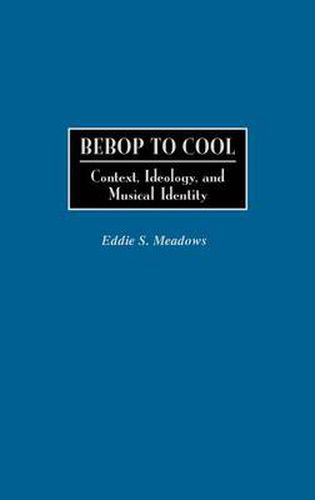Readings Newsletter
Become a Readings Member to make your shopping experience even easier.
Sign in or sign up for free!
You’re not far away from qualifying for FREE standard shipping within Australia
You’ve qualified for FREE standard shipping within Australia
The cart is loading…






Bebop music is more than a jazz movement that seemed to have burst suddenly upon the jazz scene-it is an outgrowth of the sociocultural environment dating from the 1920s through the 1940s. In this consideration of the period and its music, noted jazz scholar Eddie S. Meadows traces the cultural and ideological context that produced Bebop and advocates that Cool Jazz was a reaction to Bebop, a natural outgrowth of its predecessor. Unlike most jazz research on the subject, ^IBebop to Cool^R features insider perspectives on both the social context of the music and the music itself, as a means of capturing the musical aesthetics and the cultural spirit of the time.
The volume includes the perspectives of Marcus Garvey, W. E. B. DuBois, and other leaders of the Harlem Renaissance; also discussed here for the first time is the role that Islam played in the music’s development. Finally, in identifying and discussing the work of such significant musicians as Miles Davis, Dizzy Gillespie, Thelonious Monk, Charlie Parker, and Stan Getz, Meadows demonstrates their unique musical identities within the respective genres that compose the revolutionary Bebop and Cool Jazz movements.
$9.00 standard shipping within Australia
FREE standard shipping within Australia for orders over $100.00
Express & International shipping calculated at checkout
Bebop music is more than a jazz movement that seemed to have burst suddenly upon the jazz scene-it is an outgrowth of the sociocultural environment dating from the 1920s through the 1940s. In this consideration of the period and its music, noted jazz scholar Eddie S. Meadows traces the cultural and ideological context that produced Bebop and advocates that Cool Jazz was a reaction to Bebop, a natural outgrowth of its predecessor. Unlike most jazz research on the subject, ^IBebop to Cool^R features insider perspectives on both the social context of the music and the music itself, as a means of capturing the musical aesthetics and the cultural spirit of the time.
The volume includes the perspectives of Marcus Garvey, W. E. B. DuBois, and other leaders of the Harlem Renaissance; also discussed here for the first time is the role that Islam played in the music’s development. Finally, in identifying and discussing the work of such significant musicians as Miles Davis, Dizzy Gillespie, Thelonious Monk, Charlie Parker, and Stan Getz, Meadows demonstrates their unique musical identities within the respective genres that compose the revolutionary Bebop and Cool Jazz movements.